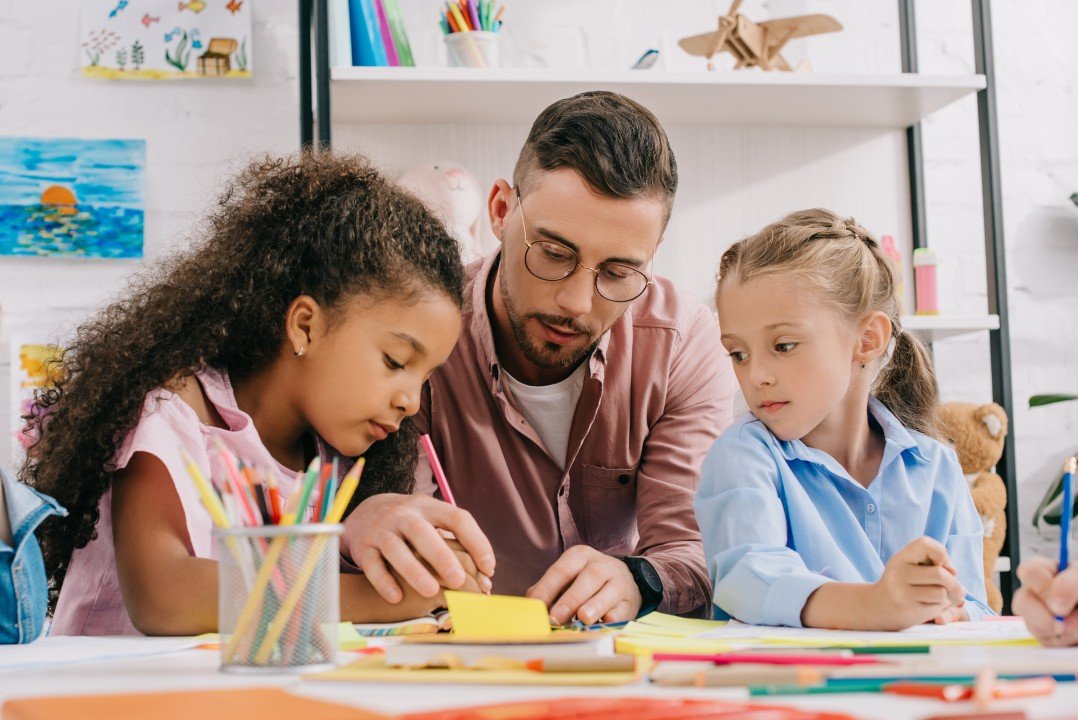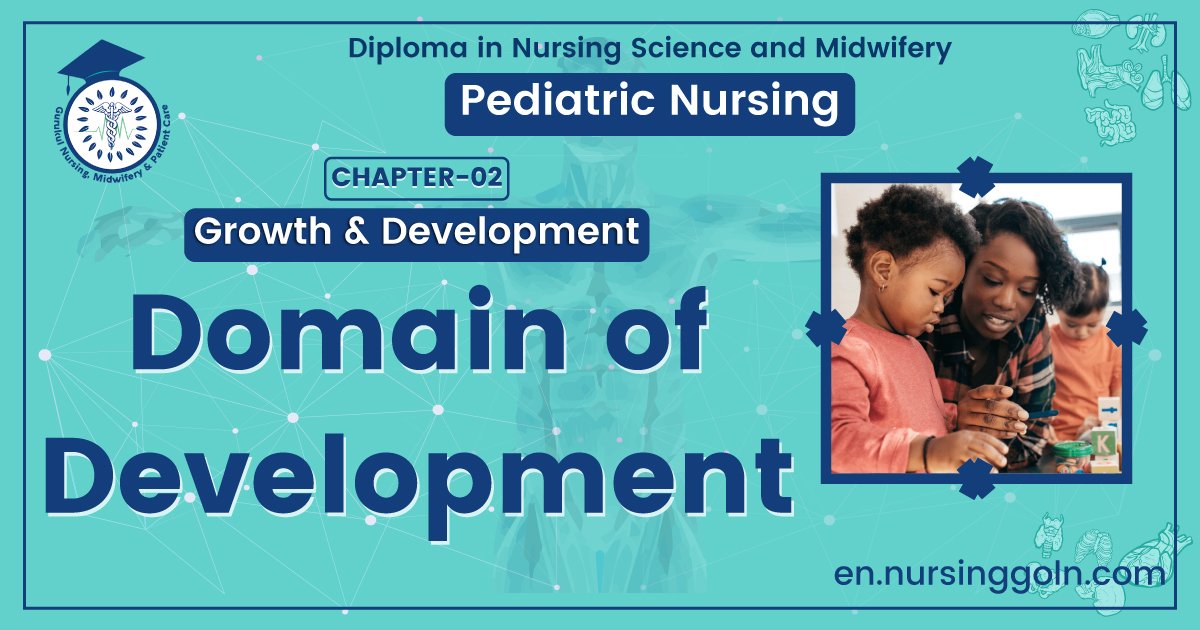Domain of Development – Health of the children has been considered as the vital importance to all societies because children are the basic resource for the future of humankind. Nursing care of children is concerned for both the health of the children and for the illnesses that affect their growth and development. The increasing complexity of medical and nursing science has created a need for special area of child care, i.e. pediatric nursing.
Pediatric nursing is the specialized area of nursing practice concerning the care of children during wellness and illness. It includes preventive, promotive, curative and rehabilitative care of children. It emphasizes on all round development of body, mind and spirit of the growing individual. Thus, pediatric nursing involves in giving assistance, care and support to the growing and developing children to achieve their individual potential for functioning with fullest capacity.
Domain of Development

Concept about Domain of Development
In relation to human development, the word “domain” refers to specific aspects of growth and change. Major domains of development include social-emotional, physical, language and cognitive.
Kids often experience a significant and obvious change in one domain at a time, so it may seem that a particular domain is the only one experiencing developmental change during a particular period of life. In fact, however, change typically is also occurring in the other domains but it’s occurring gradually and less prominently.

Definition of Domain:
In relation to human development, the word “domain” refers to specific aspects of growth and change.
Or
Domain is an area of interest or an area which signify the functional capability of an individual.
Domains of Development:
| Cognitive domain: | Cognitive development involves the expansion of a child’s intellect or mental abilities: The cognitive process includes such mental activities as giving attention, discovering, interpreting, sorting, classifying and remembering information. Thinking capacity, problem solving, making judgments, thinking ahead, and understanding rules and concepts are linked to this domain. |
| Motor domain: | Motor development is a child’s ability to move and control various body parts. It is of two kinds; a) Gross motor: Gross, motor refers to movements of large muscle and joints such as sitting, walking, running. b) Fine motor: fine motor activities involve movements of small muscles and joints such as using pencil, buttoning and zipping |
| Vision: | The infant needs to acquire visual co-ordination with fine motor function to perform complex tasks such as dressing, writing |
| Hearing: | During the later stages of pregnancy, the fetus responds to sound. At birth, a baby reacts to sound, but there is a marked preference for voices. The ability to locate and turn towards sounds comes later in the first 3 month of life. |
| Speech: | Language is a system that allows us to communicate with one another. It covers understanding the ideas of others as well as expressing own ideas in terms of spoken, written or sign of expression. Components of language are: Preverbal, Receptive, Expressive and Verbal. |
| Social domain: | Social development deals with the attitudes and relationship of the child with others. It begins under the guidance of parents and family members. When children enter group settings, they are further exposed to behaviors of social rules: and attitudes that foster culturally appropriate social developments. They learn to co-operate, disagree, share, communicate and assert themselves. |
| Emotional domain | Emotion refers to how people/children feel about themselves and how they express it. Emotions such as love, joy and sorrow develop as children respond to life’s experiences with a full range of feelings. Observable behavior may be a) Positive emotions: Characterized by the tendency to approach e.g joy, love etc. |
| Autonomy domain: | It is the process of learning to control oneself and a part of the environment with the goal of obtaining competency and self-care, self-development and independence. For example, being able to feed self, button one’s clothes, tie shoelaces etc. |

Important Primitive Reflexes of Children:
| Primitive reflex | Primitive reflex | How to elicit | Age of disappearance |
| Moro reflex | At birth | The Moro reflex is elicited by allowing the infant’s head to gently move back suddenly (from a few inches off of the mattress onto the examiner’s hand), resulting in a startle, then abduction and upward movement of the arms followed by adduction and flexion. | 3-4 months. |
| Sucking reflex | At birth | The sucking reflex occurs with almost any object placed in the newborn’s mouth. The infant responds with vigorous sucking. The sucking reflex is replaced later by voluntary | 6-9 months. |
| Palmar grasp reflex | At birth. | The grasp reflex occurs when placing an object, such as a finger, onto the infant’s palm (palmar grasp) or sole (plantar grasp). The infant responds by flexing fingers. | 3 months. |
| Parachute reflex | 9 months | Holding the child in ventral suspension and suddenly lowering him to the couch. The arm extend as a defensive reaction | Persists. |
| Rooting response | At birth. | The rooting reflex Is elicited by touching the corner of the infant’s mouth, resulting in lowering of the lower lip on the same side with tongue movement toward the stimulus. The face also turns toward the stimulus. | 4 months (when aware) 9 months (when sleep) |
| Asymmetric tonic neck reflex | At birth | The asymmetric tonic neck reflex is elicited by placing the infant supine and turning the head to the side. This placement results in ipsilateral extension of the arm | 6-7 months |
Read more:
